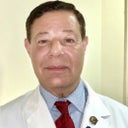I would like to have microneedling treatment for mild acne scarring , however I'm concerned if the needling could possibly cause sebaceous hyperplasia? Most information I have read suggests microneedling is a safe procedure & could not cause sebaceous hyperplasia ?
Answers (4)
From board-certified doctors and trusted medical professionals

Dr. Jeffrey R. Raval, MD, FACS, MBA
Board Certified Facial Plastic Surgeon
Answer

Dr. Stephen Giordano, DO
Physician, Board Certified in Internal Medicine
Answer

Dr. Nelson Lee Novick, MD
Dermatologic Surgeon, Board Certified in Dermatology
Answer
Dr. Mitchell Schwartz, MD - Account Suspended
Dermatologic Surgeon, Board Certified in Dermatology
Answer
More Microneedling Questions
See all Microneedling Q&AWE SEND PRETTY
EMAILS
What’s trending? Who’s turning heads? Which TikTok myths need busting? We’ve got you. No fluff, no gatekeeping—just real talk. Get our free, unfiltered newsletter.